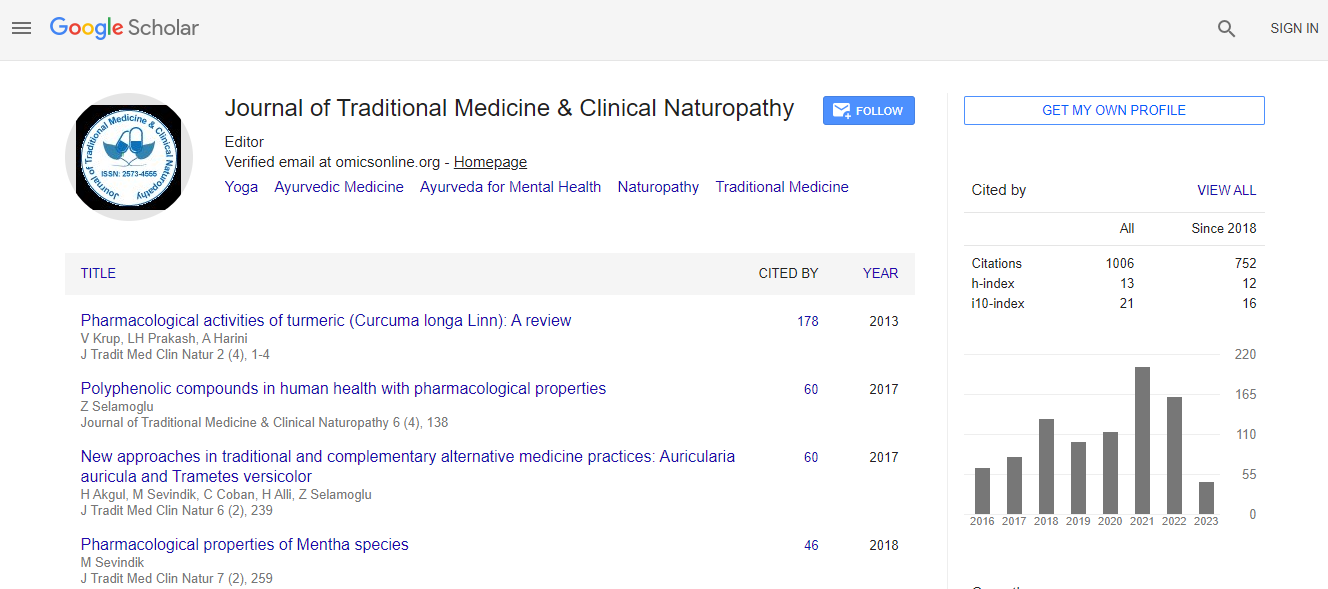Research Article
Improvement of Glucose Tolerance and Related Metabolic Disorders Using Some Ayurvedic Mineral Preparations (Bhasmas)– in Nanomedicinal Perspective
| Birgit Baur-Mueller* | |
| Practitioner of Chinese Medicine, Acupuncture & Western Herbs in Chinese Medicine, Selfheal Center, Bavaria, Germany | |
| Corresponding Author : | Birgit Baur-Mueller Practitioner of Chinese Medicine Acupuncture & Western Herbs in Chinese Medicine Selfheal Center, Bavaria, Germany Tel: 08203-951738 E-mail: b8birgit@yahoo.de |
| Received: August 28, 2014; Accepted: June 24, 2015; Published: July 01, 2015 | |
| Citation: Mueller BB (2015) The Treatment of Down Syndrome, Trisomie 21 with Acupuncture. J Homeop Ayurv Med 4:181. doi:10.4172/2167-1206.1000181 | |
| Copyright: © 2015, Mueller BB. This is an open-access article distributed under the terms of the Creative Commons Attribution License, which permits unrestricted use, distribution, and reproduction in any medium, provided the original author and source are credited. | |
| Related article at Pubmed, Scholar Google | |
Abstract
In the present study giving emphasis on diabetes mellitus, we have taken up some specialised Ayurvedic metallic preparations (Bhasmas) like Yasada (Zn), Vanga (Sn) and Naga (Pb) Bhasmas and also Swarna (Au), Raupya (Ag), Makardhwaja (HgS) Bhasmas used in related metabolic disorders (dyslipilidemia, stress related and certain immune system disorders including ageing related complications). Though metals are not antidiabetic as such, the role of some mineral elements in the management of impaired glucose tolerance (early sign of diabetes mellitus) was well established. Also increased oxidative stress is found to be associated with the progression of diabetes mellitus and different metabolic disorders. Some metallo-enzymes like arginase, pyruvate carboxylase, manganese-superoxide dismutase are found to be beneficial in this regard. Further, it is known that nano-materials below 100 nm scale show reduced toxicity towards mammalian host and increases toxicity towards infectious organisms. As such, next for the measurement of the particle size (in nano scale) of the above Ayurvedic preparations, Transmission Electron Microscope (TEM) was used. Surprisingly all the above experimental samples are found to be within 100 nm scale and thus eliminating the risk of toxicity when used in prescribed dose. For example: Yasada Bhasma (12.5 nm), Vanga Bhasma (12.1 nm), Naga Bhasma (12.5 nm), Swarna Bhasma (12.2 nm), Raupya Bhasma (51 nm) and Makardhwaja Bhasma (39 nm).

 Spanish
Spanish  Chinese
Chinese  Russian
Russian  German
German  French
French  Japanese
Japanese  Portuguese
Portuguese  Hindi
Hindi 
